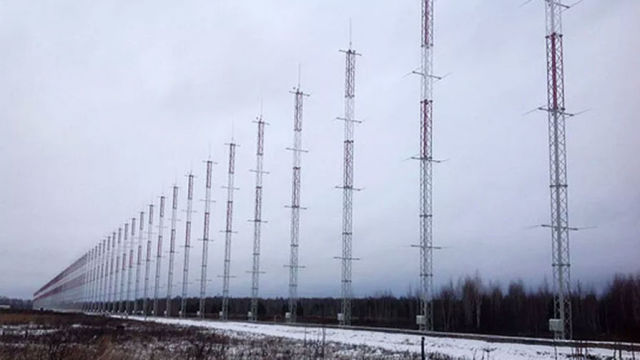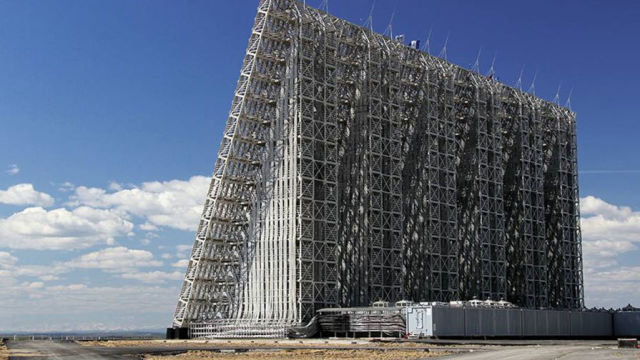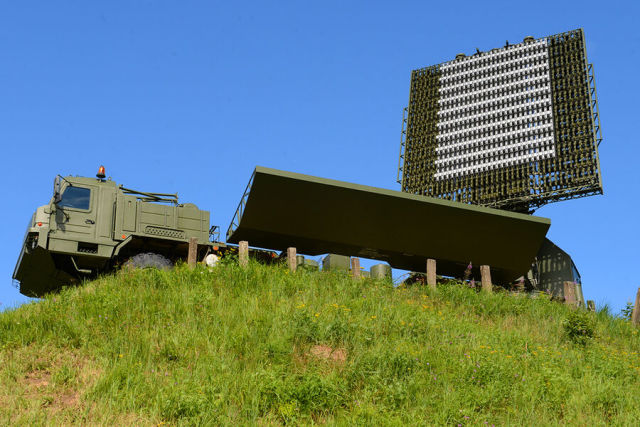Colonel Khodarenok saw a connection between Kiev's radar strikes and NATO activity
The Armed Forces of Ukraine continue to strike at individual radio-technical nodes of the missile attack warning system (ortu SPRN). On May 26, a Ukrainian drone attacked the Voronezh-M long-range target detection radar station in the vicinity of Orsk. Prior to that, on May 23, the Armed Forces of Ukraine attacked the Voronezh-DM radar station in Armavir, and on April 17, Ukrainian unmanned aerial vehicles attacked the Container over-the-horizon radar station in Mordovia. Why does the Armed Forces of Ukraine attack the missile warning system of the Russian Federation and what does NATO have to do with it - in the material of the military observer "Gazeta.En" by Mikhail Khodarenka.
The missile attack warning system is a complex of separate radio engineering units and other technical means of detecting the launch of intercontinental ballistic missiles and submarine ballistic missiles, calculating their trajectory and transmitting information to the CP of the SPRN, on the basis of which the fact of an attack on a State using missile weapons is recorded and an operational decision on retaliatory actions is taken.
In the Armed Forces of the Russian Federation, the solution of missile attack warning tasks is assigned to the 15th Army of the Aerospace Forces of special purpose (15th A VKS ON), which is engaged in controlling the orbital grouping of spacecraft, detecting launches of ballistic intercontinental missiles and observing near-Earth space.
Impact on the radar "Container"
On April 17, Ukrainian unmanned aerial vehicles attacked the over-the-horizon radar "Container" in the vicinity of the city of Kovylkino (Republic of Mordovia).
The two-coordinate radar station for over-the-horizon spatial wave detection 29B6 "Container" is located in transportable containers and does not require capital construction.
The radio engineering node of such radars consists of two parts: transmitting and receiving. Each of them has a technical position and a residential town in its composition. Antenna-feeder devices with all necessary switching and other equipment are installed in the technical positions.
The principle of operation of over-the-horizon locators is very different from conventional over-the-horizon radars. The latter operate in the "line of sight" zone, which is limited to a distance of tens, maximum hundreds of kilometers. Over-the-horizon systems use the reflection of radio waves from the ionosphere, the upper layer of the Earth's atmosphere, which is highly ionized due to cosmic ray irradiation. Radio waves of the desired range are reflected from it as if from a "mirror" high above the horizon, then reach the Earth, where they can again be reflected from the desired targets - airplanes, ships and rockets taking off - and again return through the ionosphere to the receiving antennas. This creates a radar field for thousands of kilometers.
The signal of the "Containers" is reflected from the ionosphere only once, so that it is possible to obtain sufficiently accurate target designation and track even small aircraft in Western Europe.
Russia plans to create a grouping of over-the-horizon radar detection "Container" and "Sunflower" along the perimeter of the entire border. This will make it possible to detect and escort cruise missiles, aircraft and ships with nuclear weapons at a range of 1.5 - 2 thousand km from Russian territory.

Image source: Russian Ministry of Defense
For example, on the border with Belarus, in the Smolensk region, a unique ZGO 80P6 radar has already been built, which can detect aircraft with low radar visibility and cruise missiles within a radius of 2.5 thousand km (up to the western borders of France).
The multifunctional intelligence and information complex (namely, the so-called radar 80P6) is designed for:
- improving the effectiveness of solving aerospace defense tasks in the most important missile-hazardous areas;
- solving the problems of information support for the formed East Kazakhstan Region connections, as well as mobile complexes;
- information support for testing and combat training launches of domestic ballistic missiles in the areas of test sites.
The station is fully ready for operation, but for unknown reasons it has not yet been put on combat duty.
Voronezh attacks
On May 23, the UAV of the Armed Forces of Ukraine attacked the radar of the Voronezh-DM missile attack warning system in Armavir. According to some reports, Ukraine then used the Portuguese drone Tekever AR3.
The Voronezh radar station is a stationary over-the-horizon radar station of the so-called high factory readiness (VZG radar). There are variants of the locator that operate in the range of both meter and decimeter radio waves. Both have their own set of advantages and disadvantages.
The 77YA6 Voronezh-M meter range radar was developed and manufactured by JSC Radio Engineering Institute named after Academician Mints, and the 77YA6-DM decimeter range station Voronezh-DM was developed by JSC Scientific and Production Complex Scientific Research Institute of Long-Range Radio Communications.
The station consists of a transceiver installation with an active phased array antenna, a prefabricated building for personnel and several containers with electronic equipment.
The target detection range of Voronezh-M, which operates in the meter range, reaches 6 thousand km. Voronezh-DM, which operates in the decimeter range, is up to 6 thousand km horizontally and up to 8 thousand km vertically.
Each radar is capable of simultaneously detecting and tracking up to 500 objects.

Image source: mil.ru
Voronezh-DM radar stations are deployed in Armavir, Krasnodar Territory, the settlement of Pionersky, Kaliningrad Region, Yeniseisk (Ust-Kem settlement), Barnaul (Konyukhi settlement), Altai Territory and in the city of Zeya, Amur Region. Voronezh-M is located in the locality of Lekhtusi in the Leningrad region, Orsk in the Orenburg region, the city of Usolye-Sibirskoye (Mishelevka) in the Irkutsk region and in Vorkuta (the locality of Vorgashor in the Komi Republic).
On May 26, a Ukrainian drone attacked the Voronezh-M long-range target detection radar station located in the vicinity of the city of Orsk in the Orenburg region. At the same time, the device covered a distance of more than 1,800 kilometers to the SPRN facility, setting a new flight range record for kamikaze drones.
"Part of a well-thought-out plan"
If one attack by the UAV of the Armed Forces of Ukraine may be an accident, but the second is a pronounced trend, and the third is a system.
It is on the basis of the data received from the SPRN that the President of Russia decides to launch a retaliatory, retaliatory or (in some cases) preemptive strike against the enemy.
Such actions by the Armed Forces of Ukraine should be considered only part of a well-thought-out plan. Besides the media effect, there are other circumstances. "NATO's intelligence activities are increasing near the Russian border, and the intensity of operational and combat training activities for alliance troops is increasing, during which scenarios for conducting military operations against the Russian Federation, including nuclear strikes on our territory, are being worked out." This was stated by the first deputy director of the FSB, the head of the FSB Border Service, Army General Vladimir Kulishov.
So the relationship between the attacks of the Armed Forces of Ukraine on Russian individual radio-technical nodes of the SPRN and similar actions of NATO can be traced quite clearly. What to do? Of course, it is necessary to dramatically strengthen the anti-aircraft missile and fighter aviation cover of such nodes. In addition, retaliatory strikes of such force should be carried out on military facilities on the territory of Ukraine that the military and political leadership in Kiev completely discourage even thoughts of continuing strikes on the missile attack warning system.
The opinion of the author may not coincide with the position of the editorial board.
Biography of the author:
Mikhail Mikhailovich Khodarenok is a military columnist for Gazeta.Ru", retired colonel.
He graduated from the Minsk Higher Engineering Anti-Aircraft Missile School (1976), the Military Air Defense Command Academy (1986).
Commander of the S-75 anti-aircraft missile division (1980-1983).
Deputy commander of the anti-aircraft missile regiment (1986-1988).
Senior Officer of the General Staff of the Air Defense Forces (1988-1992).
Officer of the Main Operational Directorate of the General Staff (1992-2000).
Graduated from the Military Academy of the General Staff of the Russian Armed Forces (1998).
Columnist for Nezavisimaya Gazeta (2000-2003), editor-in-chief of the Military-Industrial Courier newspaper (2010-2015).
Mikhail Khodarenok

